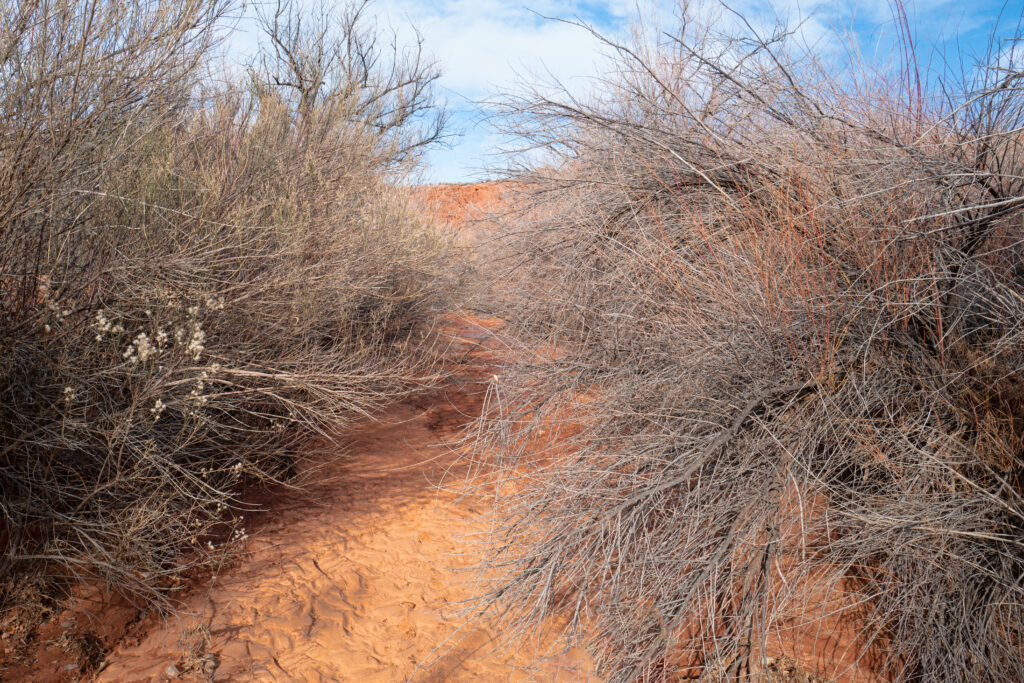
Why we Fight Tamarisk the Terrorist: A Call to Action
In the natural world, tamarisk is a terrorist. An invasive species, it takes over large swaths of land, kills other plants, and generally wreaks havoc in the environment where it imposes its implacable will. As with other terrorists, it sometimes tricks us, dressing in beautiful robes of fragile pink flowers so that we momentarily forget the destruction it causes. Do not be fooled, the tamarisk is a terrorist.
Tamarisk, also known as Saltcedar, has deep roots that, combined with salt glands on its leaves, redistribute salt from deep soil deposits to the surface where excessive salt kills some native plants and drives away animals that feed on those plants. Those same deep roots do more damage—they clog waterways and suck up water that is often not available to plants with shallow root systems, causing further plant die-out. Large tamarisk plants can pull up to 200 gallons of water per day, drying up ponds and streams. And the deep roots also force seasonal water flow to cut downward, destroying the natural streambed and often creating steep vertical banks.
But there’s more. Tamarisk also increases fire danger. Records show that fires in areas of tamarisk infestation are bigger and more frequent than in non-infested areas. The accumulation of dead branches and leaf litter create a highly combustible fuel load. Yet tamarisk recovers more quickly from a fire than other plants because it resprouts vigorously from its crown—creating the potential for yet another fire down the road.
So, what does this mean for the Kayenta community within the City of Ivins?
It means that homeowners need to understand the damage and dangers posed by the tamarisk and how tamarisk removal fits in with the vision of preserving the natural landscape that is the foundation of the Kayenta concept. To understand the danger that tamarisk growth presents in Kayenta, one need only read about the many tamarisk removal projects and groups located throughout the southwestern United States. Local removal projects have taken place on 90 miles of the Escalante River, in Confluence Park along the Virgin River in LaVerkin, and on Willow Creek and Meadow Creek in northeastern Utah as part of the Utah Watershed Restoration Initiative.
Removing tamarisk is difficult, as it grows in dense, nearly impenetrable thickets. Yet doing so will also benefit trail maintenance, which is important in Kayenta as hiking is a favored activity of residents and their guests.
The primary target for removal is a mile-long collection of tamarisk stands in the Kayenta Wash, which Chuck Warren, head of the Kayenta Trail Builders group, calls “an absolute jungle.” Citing tamarisk groupings 100 to 150 yards wide, including some with trees as large as 1 ½ feet in diameter, Warren is spearheading the Kayenta Natural Area Restoration Project designed to remove the invasive species and replant natural plants.
Preparing for this project requires defining jobs and safety procedures to dispose of cuttings and stumps treated with herbicide, gathering volunteers and tools, forecasting costs, and requesting permission from homeowners whose property extends into the wash. However, moving forward in a timely manner is imperative. The longer we wait, the stronger the terrorists become. Now is the time to banish the invaders, before it’s too late.
Questions? Contact: Chuck Warren [email protected]
Want to join the fight? Contact: Dan Beck, volunteer coordinator, [email protected]
Further reading:
Moab Protect & Preserve https://www.discovermoab.com/tamarisk-tree/

